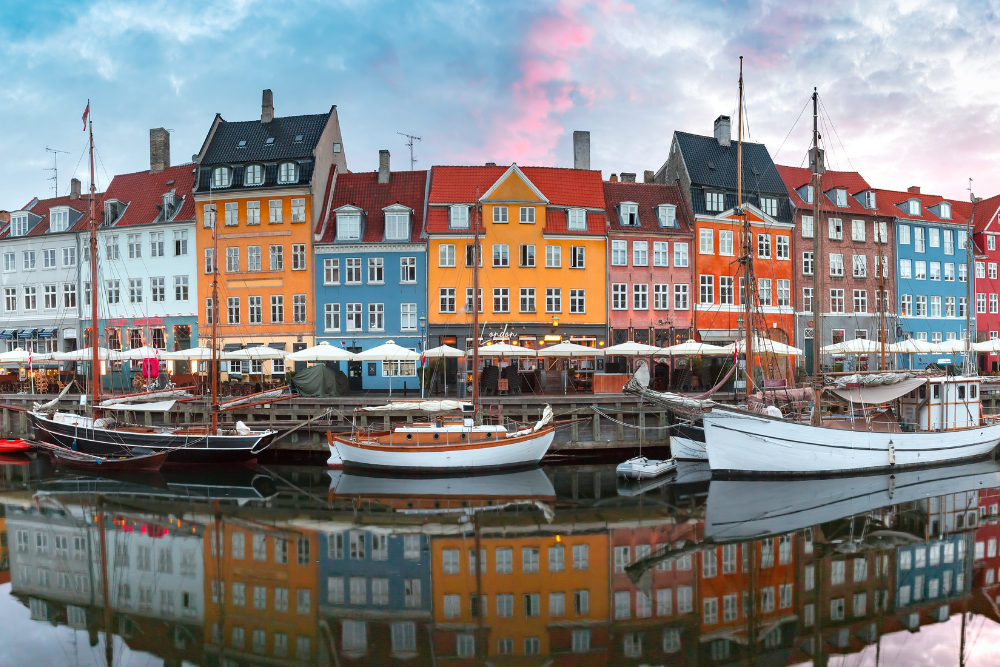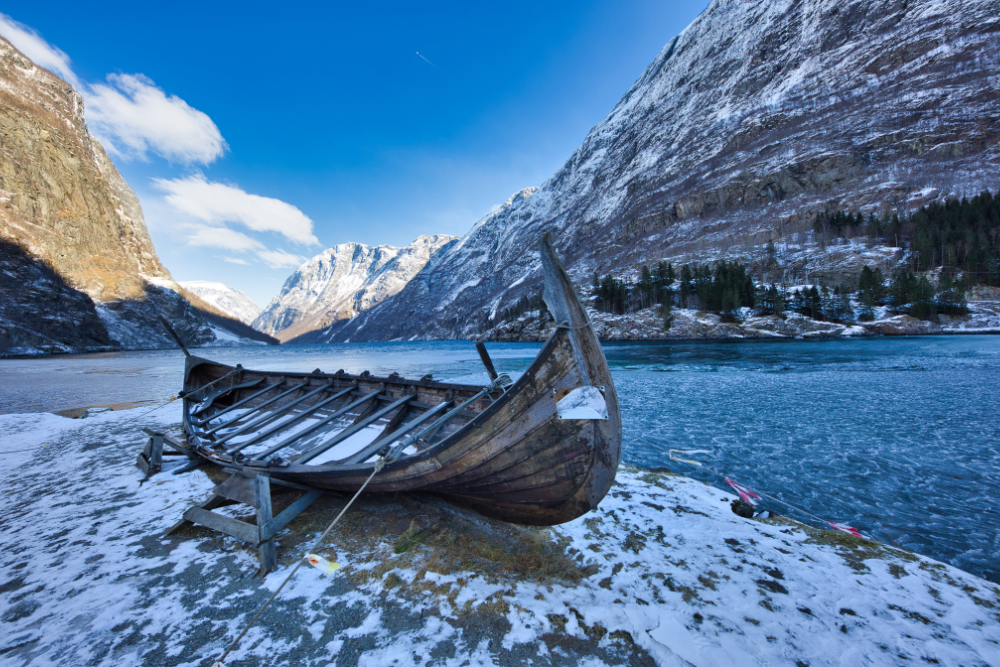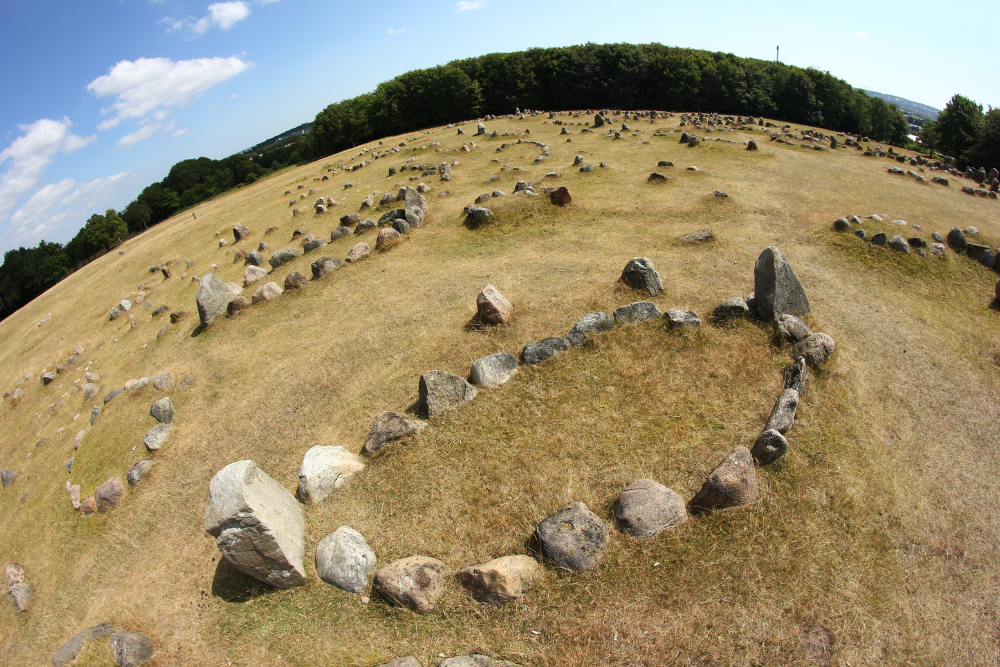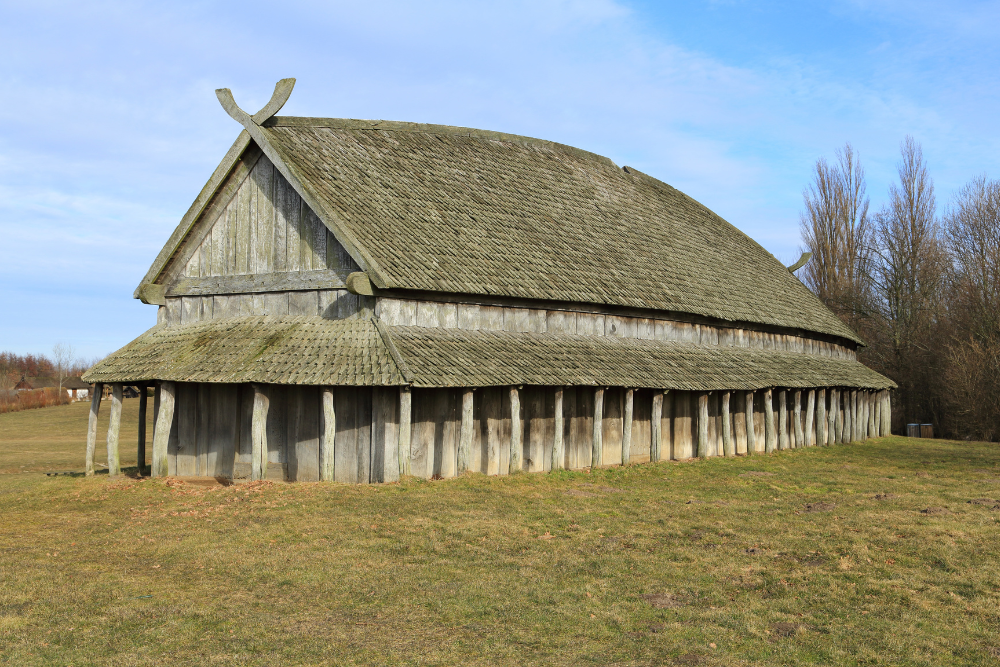Denmark, a nation celebrated for its modern design and “hygge” lifestyle, harbors a dramatic and compelling past: the Viking Age. Far from the simplistic, horned-helmeted stereotypes, the Vikings of Denmark were complex figures – explorers, traders, artisans, and warriors. My recent journey across this Scandinavian nation was a quest to peel back the layers of time and experience the tangible remnants of their remarkable legacy.
Setting Sail on History: My Viking Adventure Begins

I embarked on this historical expedition with a thirst for knowledge, eager to move beyond popular misconceptions and delve into the authentic Viking experience. Denmark, with its well-preserved archaeological sites and insightful museums, proved to be the perfect destination.
Jelling: Where Kings Rose and Christianity Arrived

My first stop was Jelling, a UNESCO World Heritage site and a crucial location in Danish history. This seemingly tranquil village holds the keys to understanding the transition from paganism to Christianity and the birth of a unified Denmark.
- The Majestic Jelling Stones:
- These runestones, commissioned by King Harald Bluetooth, are the crown jewels of Jelling. The larger stone, often referred to as Denmark’s “birth certificate,” features the earliest known depiction of Christ in Scandinavia and commemorates Harald’s unification of Denmark and Norway.
- Standing before these ancient stones, I could almost feel the weight of history, the shift from old gods to a new faith.
- The Burial Mounds and Church:
- The imposing burial mounds, believed to be the final resting places of Gorm the Old and Harald Bluetooth, stand as silent sentinels of a bygone era.
- The Jelling Church, built on the site of a former wooden church, marks the official arrival of Christianity in Denmark.
- The onsite museum is a wonderful resource to give context to all of the historical locations.
Roskilde’s Viking Ship Museum: A Voyage Through Maritime Mastery

A short train journey took me to Roskilde, home to the renowned Viking Ship Museum, a place where the Vikings’ seafaring prowess truly came to life.
- The Skuldelev Ships: Treasures from the Depths:
- The museum’s centerpiece is the collection of five Skuldelev ships, salvaged from Roskilde Fjord. These remarkably well-preserved vessels, ranging from warships to cargo ships, provide invaluable insights into Viking shipbuilding techniques and maritime capabilities.
- To see the actual ships that sailed over 1000 years ago is an incredible experience.
- The Viking Ship Hall: An Architectural Marvel:
- The museum’s hall itself is a stunning architectural achievement, designed to showcase the ships in all their glory.
- The museum also offers the opportunity to observe traditional boat building and even take a sail on a replica Viking ship, providing a hands-on experience of Viking seafaring.
Lindholm Høje: A Silent City of the Dead

Venturing north to Aalborg, I explored Lindholm Høje, one of Scandinavia’s most significant Viking burial sites, a place that evoked a profound sense of history.
- The Burial Field: A Glimpse into Viking Rituals:
- This vast burial field, dotted with hundreds of stone ship settings, offers a poignant glimpse into Viking funeral rituals and beliefs about the afterlife.
- Walking amongst the ancient stones, I felt a deep connection to the people who once inhabited this land.
- The Landscape’s Silent Testimony:
- The site’s location, on a hill overlooking the Limfjord, is breathtaking, adding to the site’s atmospheric quality.
- The museum at the site is very well planned out.
Aarhus and the Moesgaard Museum: Artifacts and Insights
In Aarhus, the Moesgaard Museum provided a comprehensive overview of Danish prehistory and Viking Age artifacts, enriching my understanding of Viking culture.
- The Grauballe Man: A Chilling Encounter:
- While not strictly Viking, the Grauballe Man, a remarkably preserved bog body, offered a chilling glimpse into life in pre-Viking Denmark.
- The preservation of the body is truly something to behold.
- Viking Age Exhibits: A Treasure Trove of History:
- The museum’s Viking Age exhibits showcased a wealth of artifacts, including weapons, jewelry, and tools, providing a deeper understanding of Viking daily life and craftsmanship.
- The museum itself is very modern and interactive.
The Enduring Legacy of the Vikings

Beyond the historical sites and museums, the Viking legacy is woven into the fabric of modern Danish society. The spirit of exploration, innovation, and resilience that characterized the Viking Age continues to inspire Danes today.
- Modern Interpretations: Keeping the Viking Spirit Alive:
- From Viking-themed festivals and reenactments to modern interpretations of Viking art and design, the Viking legacy is alive and well in Denmark.
- A Sense of National Identity:
- The Viking Age plays a significant role in shaping Danish national identity, reminding Danes of their rich and complex history.
My journey through Denmark’s Viking heritage was a truly transformative experience. It was a chance to connect with the past, to understand the complexities of a fascinating culture, and to appreciate the enduring legacy of the Vikings. Denmark offers a unique opportunity to step back in time and experience the echoes of these legendary seafarers.












